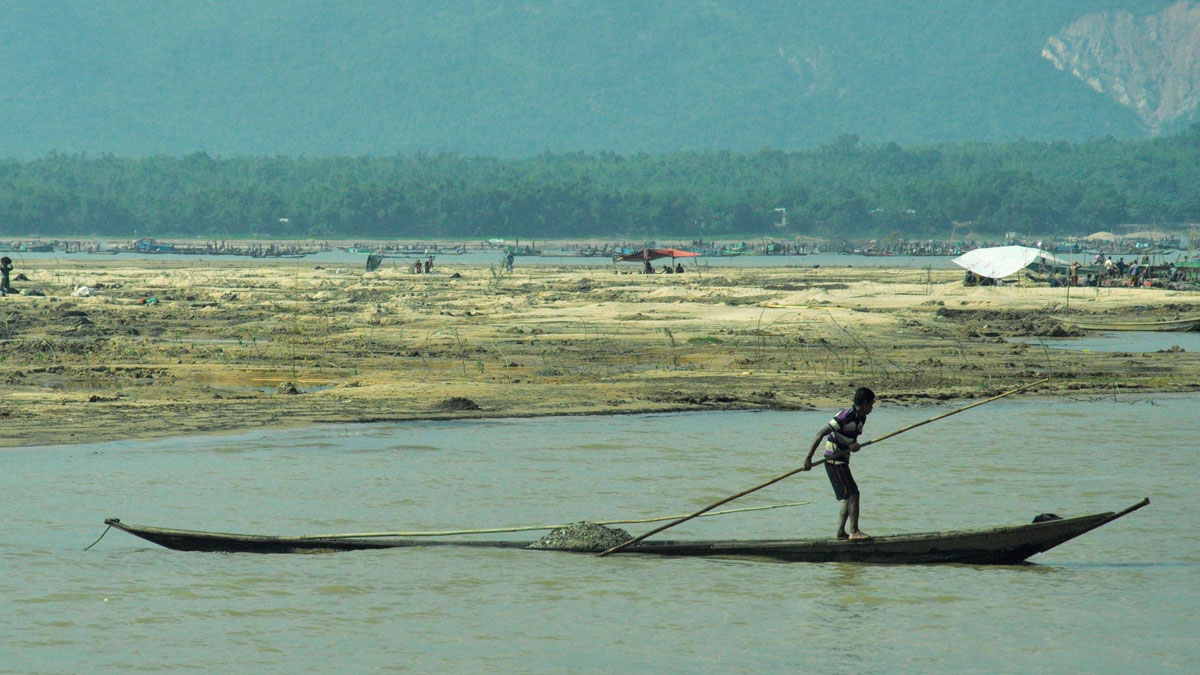Source: Water Resources Research
There’s a network of bowl-shaped depressions in northern Bangladesh called the haor landscape. During monsoon season, up to 12 meters of rain can fall in some parts of the drainage basins feeding the haor, forming wetlands that recede during the dry season.
Sediment has always flowed from the mountains along with the rains, but satellite images show that deposition has increased over the past 6 decades. Increased flooding, mining, deforestation, and poor waterway maintenance are just some of the reasons behind the rise in sedimentation. But regardless of the cause, more than 19 million people living in the region have experienced the invariably negative—and sometimes even catastrophic—impacts.
In a new study, Islam et al. collected information from 180 households in the haor to learn how sediment had affected their lives. Respondents reported experiencing a broad variety of detrimental effects. Many were related to agriculture: Sediment can increase soil acidity and thereby decrease land productivity. Sediment also clogs waterways, leading to waterlogging during certain parts of the year that can delay crop cultivation. Conversely, sediment causes groundwater levels to drop until there’s not enough water to irrigate crops once the water has receded.
People have occasionally lost their houses when flash floods suddenly fill them with sand and gravel. One interviewee recounted a night when she heard a “bang,” and suddenly, sediment, brought by a flash flood, filled more than half of her house. In recent years, sediment has also partially filled water bodies, reducing the degree to which they can store water and making subsequent flooding especially destructive.
Sediment deposition has even been associated with sexual harassment. When families have lost their homes and livelihoods, many husbands have gone to other districts in search of work. Some women reported that they experienced increased harassment from the men who remained behind.
The authors wrote that managing sediment will require creativity and coordination between the government, nongovernmental organizations, and people living in the haor. With climate change poised to further stress the region, developing a plan of action is particularly pressing. (Water Resources Research, https://doi.org/10.1029/2021WR030241, 2022)
—Saima May Sidik (@saimamaysidik), Science Writer

